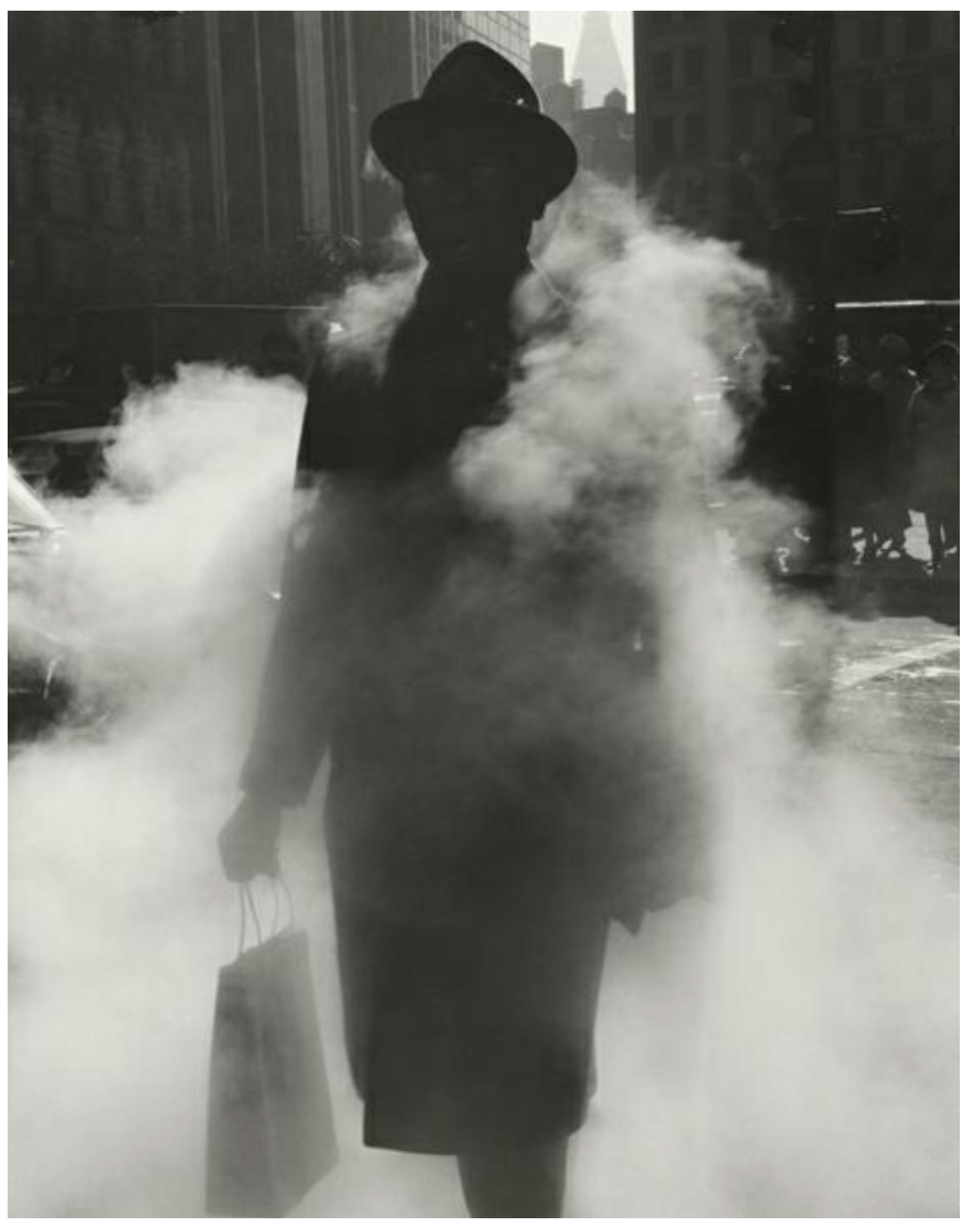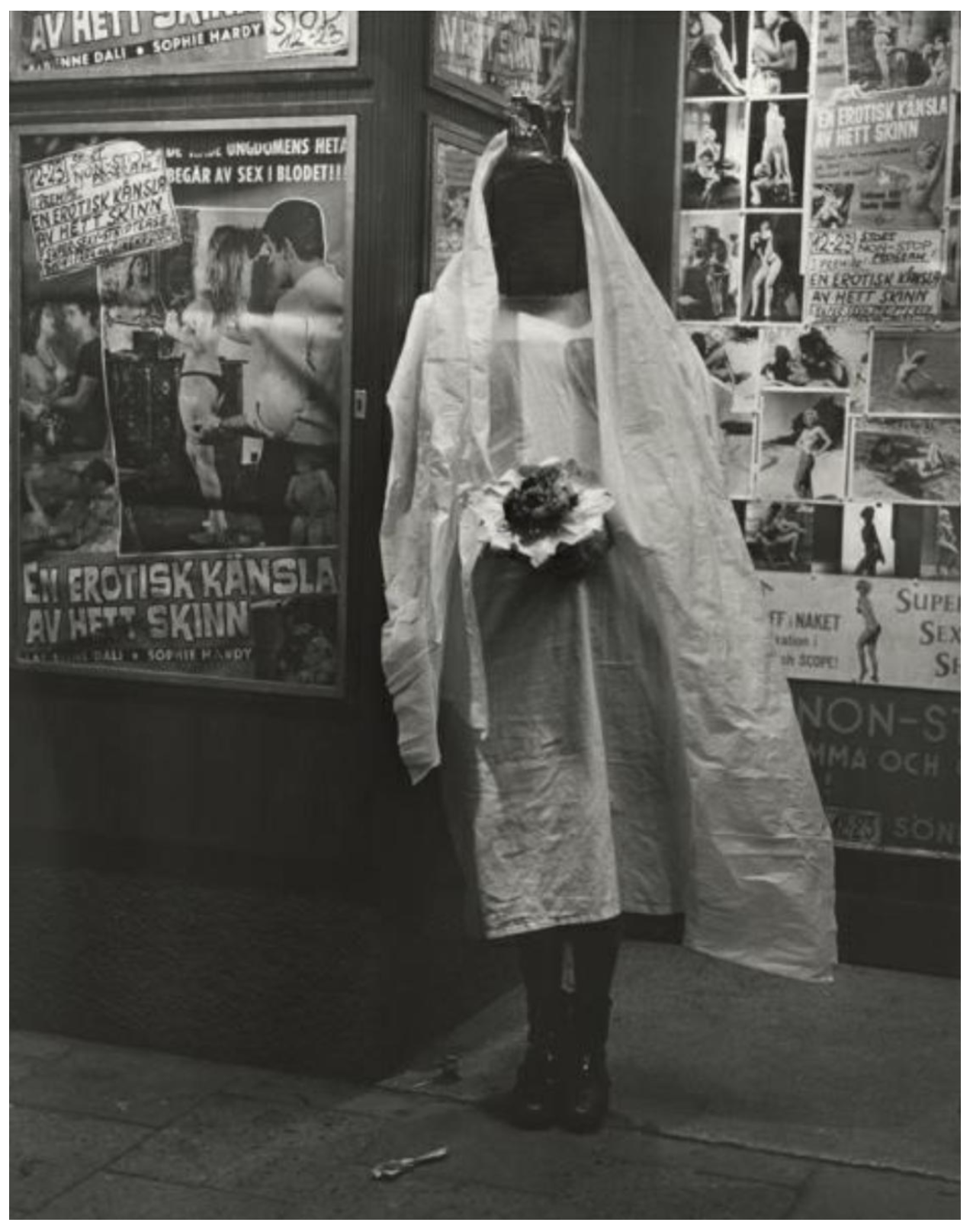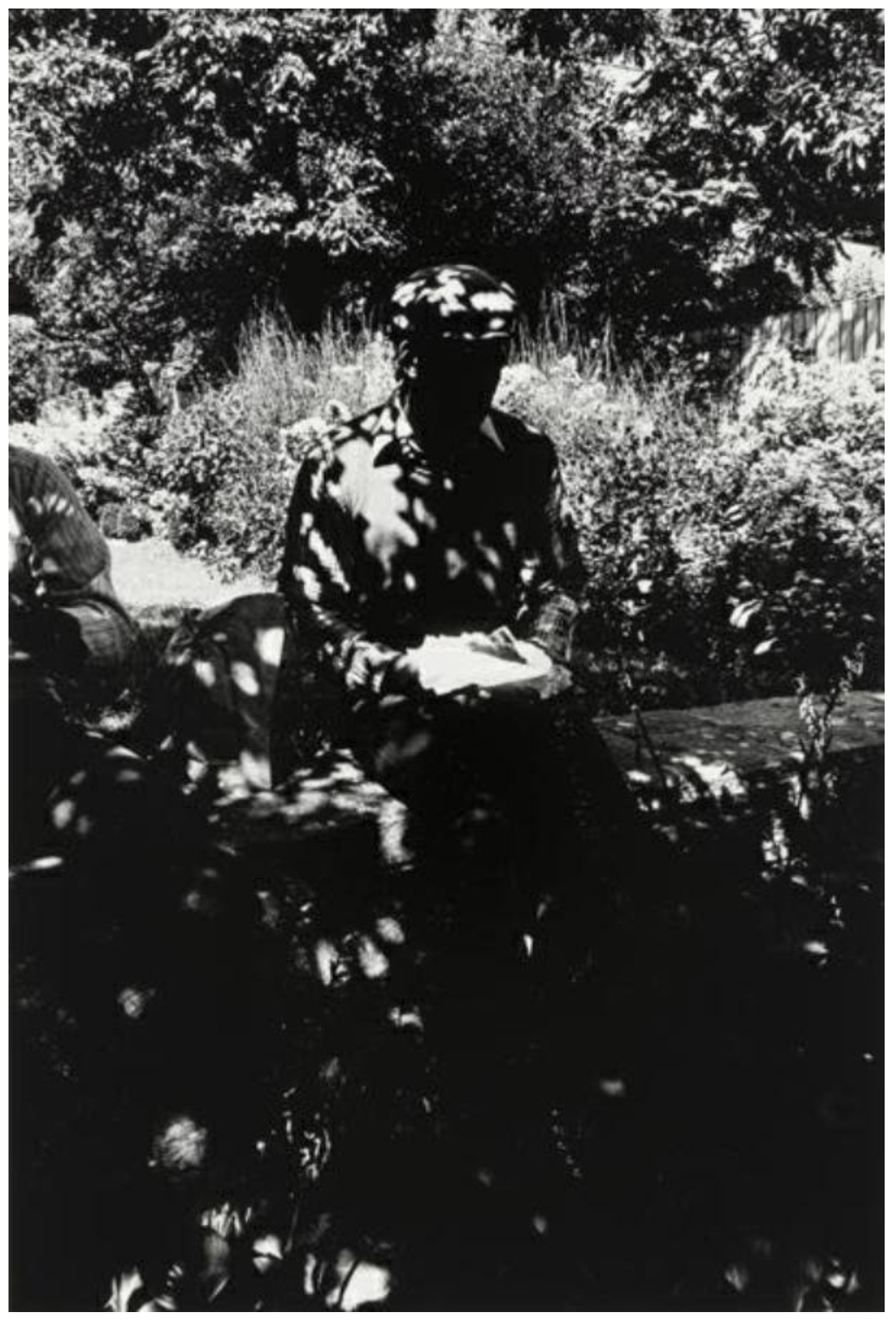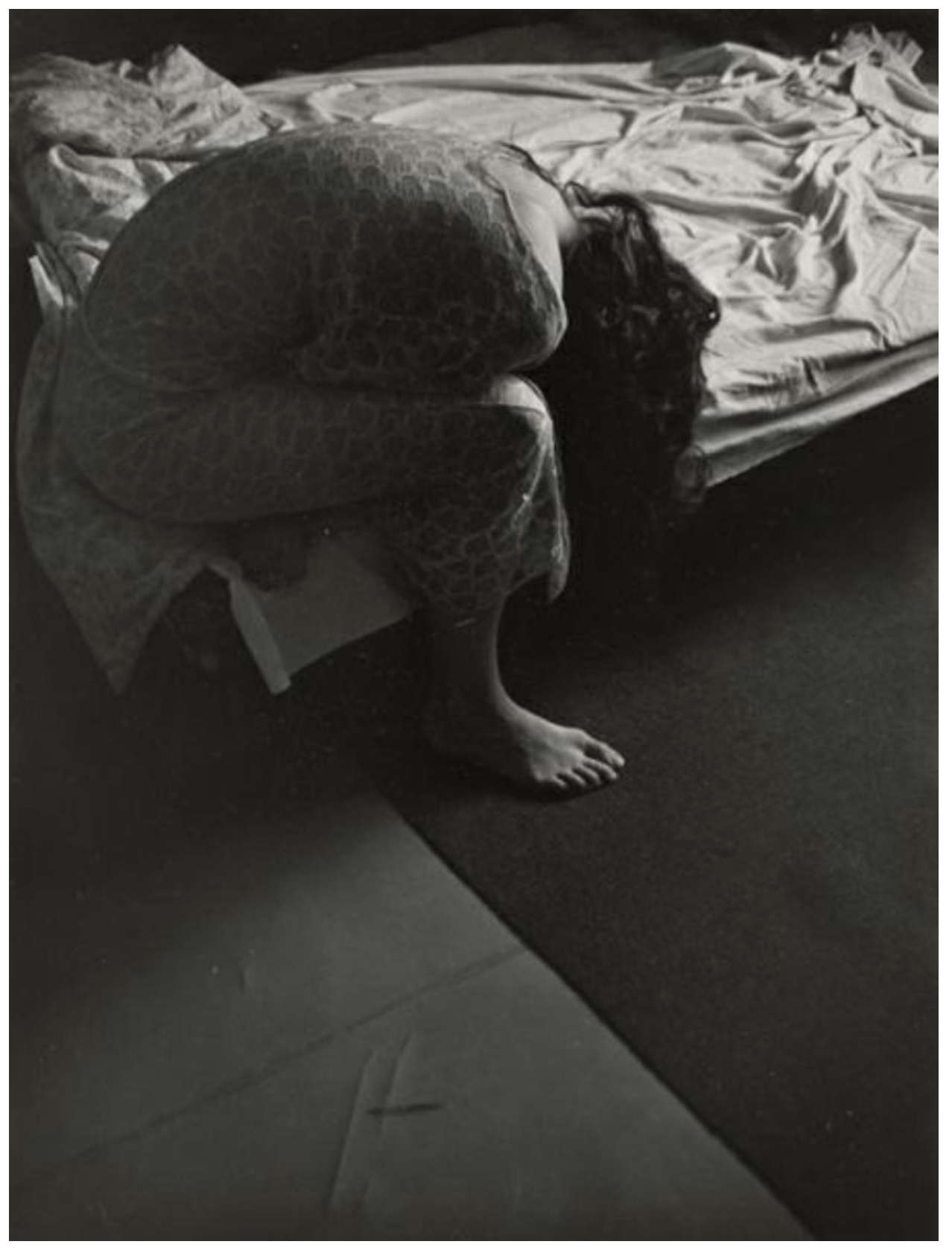Recognize Understand
Arthur Tress
Gelatin silver print
19 3/4 x 16 in
Gift from the Trustees of the Corcoran Gallery of Art (Gift of Dr. and Mrs. John V. Knaus)
© Arthur Tress
Text by Mike Guy
Man in Steam, New York City, 1968
Image Description:
This photograph was captured the year Arthur Tress moved back to New York City after traveling and living overseas. His intention was to become a professional photographer. The main figure in this image seems to be simultaneously emerging from and expanding into this public place, while remaining hard to clearly define. Like many of Tress’ photographs, the image feels like an element of a larger story, a character from a dream. This feeling is heightened with the absence of color. In an interview with Richard Photo Lab, Tress states this intention: “I feel like color is too real.” By allowing space for light and shadow to play, we are able to suspend our preconceived ideas of reality itself.
Artist Bio:
Arthur Tress is an American photographer who has captured images since the 1950s. Growing up in New York City, he was influenced by street photographers and surrealist painters. The surrealist-inspired niche, Magic Realism, drives much of his photography. “People think my photography is staged,” Tress states, “but I consider it to be improvised photography. I just walk around the streets and find amazing, dream-like things in our day-to-day reality.”
Arthur Tress
Gelatin silver print
19 7/8 x 16 in
Gift from the Trustees of the Corcoran Gallery of Art (Gift of Dr. and Mrs. John V. Knaus)
© Arthur Tress
Text by Mike Guy
Masked Bride, Sweden, 1967
Image Description:
This image was composed while Arthur Tress was living in Sweden working as a photographer at the Stockholm Ethnographic Museum. Tress’ surrealist tendencies are ever present in this image, with a faceless figure posing with their hands centered, presenting an offering among an advertisement filled wall. Her garment is white, and she is an angelic, faceless symbol.
Mask-use in the public realm has become increasingly important, but no less surreal to experience. The absence of color allows this photograph to feel like an element of a dream where the boundaries between subconscious have blurred. Imagine walking past this figure without context in a public space, unable to communicate with them.
Artist Bio:
Arthur Tress is an American photographer who has captured images since the 1950s. Growing up in New York City, he was influenced by street photographers and surrealist painters. The surrealist-inspired niche, Magic Realism, drives much of his photography.
Joseph M. Mills
Gelatin silver print
14 x 10 15/16 in
Gift from the Trustees of the Corcoran Gallery of Art (Museum Purchase)
© Joseph M. Mills
Text by Andrew Kastner
Man with Lunch, n.d.
Image Description:
Tension and fragility are omnipresent in our everyday lives as we all learn to cope with the new normal that the COVID-19 pandemic presents us with. Many of us might empathize with the unseen figure in this photograph that may or may not be struggling with isolation, fatigue, or an uncertain future. Posing the question, how do we connect with our fellow citizens in a time of health mandated separation?
Artist Bio:
Joseph M. Mills is an artist based in Washington DC with a vast career consisting of a large body of work photographing the streets and the people on them in downtown Washington DC. Mills’ focus on this subject matter comes from his own struggles with mental illness which often leaves him in a fragile state. He draws on this by documenting the fragility embedded in the interactions of the urban environment, where age, class, race, and gender form a palpable tension.
Farit Gubaev
Gelatin silver print
15 5/8 H x 11 7/8 W in
Gift from the Trustees of the Corcoran Gallery of Art (Gift of the artist)
© Farit Gubaev
Text by Danielle Lane
Tanya, 1989
Image Description:
Tanya depicts a young woman crouching alone in darkness. The wrinkled, white bed and plain, uncluttered floor create a cold and blank space, shaping the environment and dramatizing the figure’s isolated anguish. Tanya is engulfed in herself, melting into the darkness that surrounds her, seemingly unaware of the photographer as her emotion echoes throughout the room.
The blank space and ambiguous identity of the woman generate more questions than answers. Who is she, and why is she immersed in her own emotions to such an extent? What happened to drive her to such a point of emotional and physical solitude? These questions only create more connections between the viewer and the woman. Her loneliness and deep, overwhelming emotion resonate on individual and personal levels, but also an expansive universal one.
Artist Bio:
Born in 1951, Russian artist and photographer Farit Gubaev was heavily influenced by artistic movements of the 1970s. Following the cultural and political division of the previous decades, these movements inspired Gubaev to focus on the universal similarities and emotions that united people across cultural boundaries. Gubaev also focused on isolating the female figure in an attempt to both depict and elicit various emotional responses.
We recognize that it is a privilege to stay home. We understand our privilege to be able to work from home, while others do not have the same choice or opportunity. We recognize that we are responsible to push beyond our own isolation and individualism to sustain action for social change.
COVID-19 has undeniably increased food insecurity in Washington DC, with even higher rates in vulnerable populations, including the elderly, children, Black and Indiginous people of color, undocumented individuals, and unhoused individuals. The demand for mutual aid, redistribution, and food assistance is more vital than ever.
Read about the impact of COVID-19 and food insecurity here:
www.feedingamerica.org/research/coronavirus-hunger-research
Please consider donating to Dreaming Out Loud, whose mission is to
“Create economic opportunities for the DC metro region’s marginalized communities through building a healthy, equitable food system”.
Donate here: www.dreamingoutloud.org/donate
Volunteer here: www.dreamingoutloud.org/volunteer
Follow Dreaming Out Loud on Instagram: @doldc
Click to Continue to the Next Group of Photographs:
Or Return to Full Gallery:






